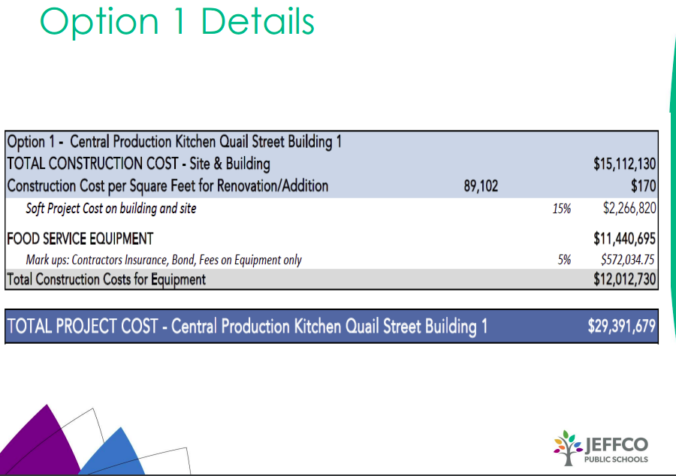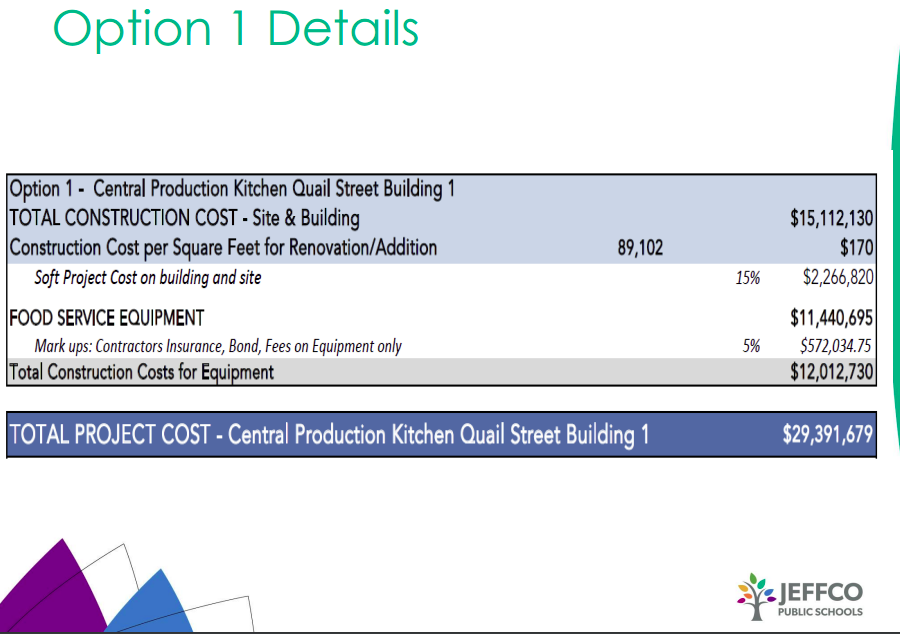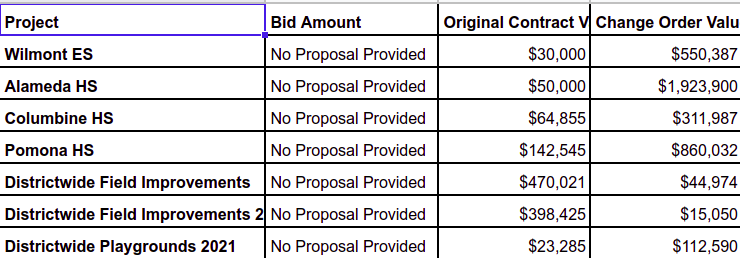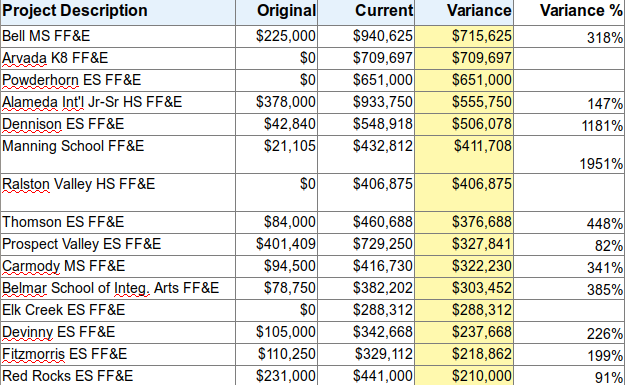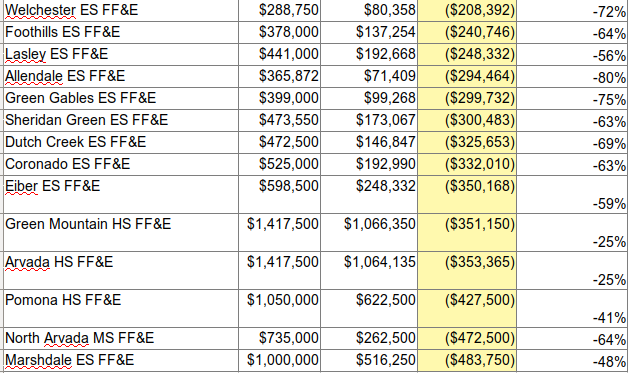In October 2019 Jeffco’s BoE approved a $36M contract, on the consent agenda without discussion, for the construction of a Jeffco Fiber Network. $21.6M of the funding for this would come from Jeffco’s Capital Reserve Fund with the remaining $14.4M from the IT dept’s budget and grants.

Board Docs very specifically stated that $21.6M would come from the Capital Reserve Fund, not the Capital Improvement Program. The bond had been approved by voters nearly a year before and numerous bond related projects up until that time flatly stated that their funding would come from the bond program. This item was different in that it stated funding was coming from Capital Reserve.
Yet, the ‘H DW Network Upgrades’ project subsequently appeared on the monthly bond program CAAC report in December 2019. When project costs first started to appear on the CAAC report in January 2021, this project came with a $7M price tag.


The project next magically appeared in a Reed presentation to the Board as a “possible” use of $14.6M unallocated contingency in October 2021.
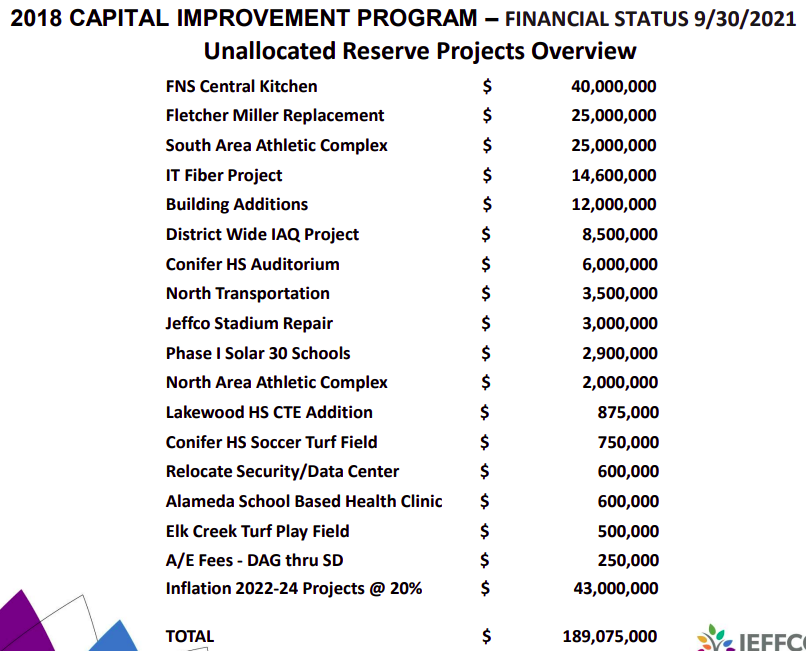
But, it didn’t stay there long. By the December 2021 meeting that $14.6M suddenly showed up on the monthly CAAC report with a $0 original budget. That means it wasn’t planned to be in the scope of the Capital Improvement Program, but yet, there it is. Who approved that and why did they approve it?

And, as is usual in Jeffco schools, it only gets worse. In a presentation posted days before a Feb 2022 Board Meeting, the Fiber project was no longer on the list of potential projects for the CIP’s unallocated contingency.
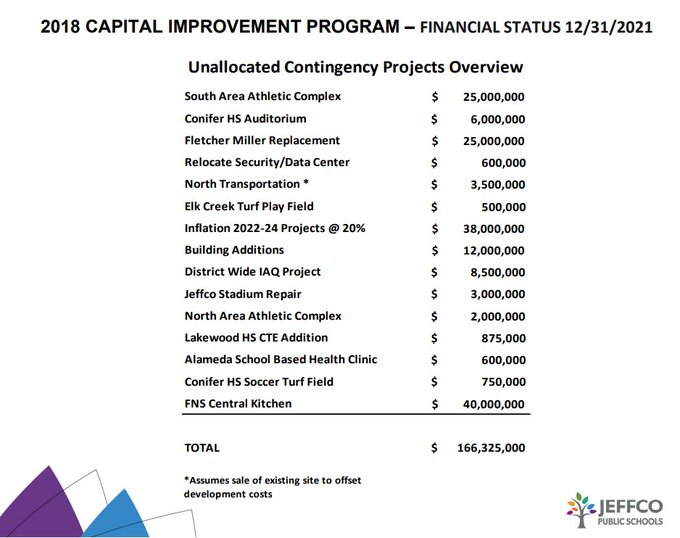
But, it magically reappeared several days later during the actual presentation (revision 1), but with a price tag of $5.4M, while still appearing on the CAAC report for $14.6M. The only reasonable conclusion for this is that the project is either running significantly over budget, or the IT dept can’t totally fund its $14.4M portion of the project.
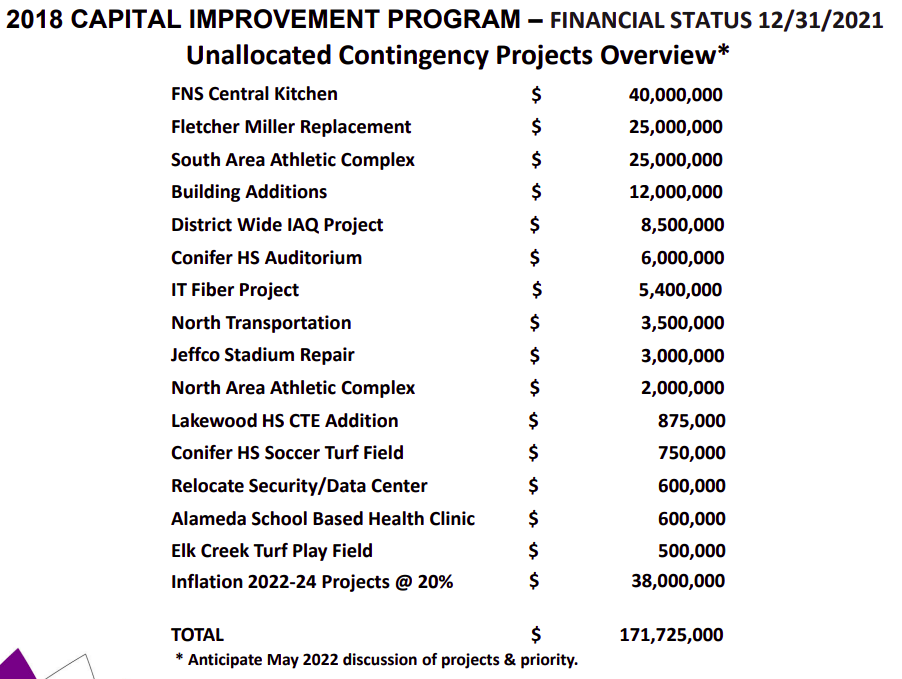

Something very strange is happening with the Fiber project. The 10+ schools, including Vivian, Mulholm and Lumberg, who will end the program with FCIs over 20% will continue to suffer in facilities with significant needs because the bond program is spending money on projects that were hidden from voters and not going directly into fixing classrooms.

